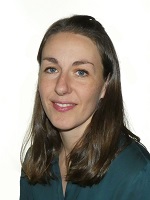Due to copyright issues, an electronic copy of the thesis must be ordered from the faculty. For the faculty to have time to process the order, the order must be received by the faculty at the latest 2 days before the public defence. Orders received later than 2 days before the defence will not be processed. After the public defence, please address any inquiries regarding the thesis to the candidate.
Trial Lecture – time and place
See Trial Lecture.
Adjudication committee
- First opponent: Provost Professor Arthur W. Toga, University of Southern California, US
- Second opponent: PhD Kaja Nordengen, Oslo University Hospital,
- Third member and chair of the evaluation committee: Professor Espen Dietrichs, University of Oslo
Chair of the Defence
Associate Professor Torkel Hafting, University of Oslo
Principal Supervisor
Professor and Pro-Dean for Research and Innovation, Jan G. Bjaalie, University of Oslo
Summary
Mice and rats are used as models in the investigation of human brain disorders. In such studies, the effects of genetic risk factors on brain structure, function and behaviour are investigated, with disease severity linked to changes in cell numbers and pathology in specific regions. As such, the ability to accurately detect, locate and quantify features in the brain is of crucial importance, with serial brain sections used for this purpose. With a lack of user-friendly methods available for obtaining brain-wide standardised results, reproducibility and replicability are affected, hampering comparison and integration of results across studies.
To address this problem, Yates and colleagues developed new tools and workflows for performing brain-wide quantification using reference brain atlases. They did this by combining two existing software, a tool for registering brain section images to a reference atlas and a tool for extracting features by segmentation, with a new software for performing brain-wide quantification (the QUINT workflow). Firstly, they showed how the workflow could be used to locate and quantify pathology in an Alzheimer’s disease mouse model. Secondly, they shared the tools with the research community through the EBRAINS research platform, and at the request of users, expanded the workflow to support analysis of tract tracing experiments.
Finally, in collaboration with other research groups internationally, they expanded the workflow to support high-throughput studies requiring systematic quality control checks. This allowed the workflow to be used to analyse data from a novel mouse model of Alzheimer’s disease incorporating risk mutations with genetic diversity. Through this study, the effects of aging in AD were characterised in brain-wide regions. A method was also developed for integrating regional QUINT results with corresponding transcriptomic data, revealing genes and pathways associated with AD progression in the hippocampal formation.
Additional information
Contact the research support staff.
